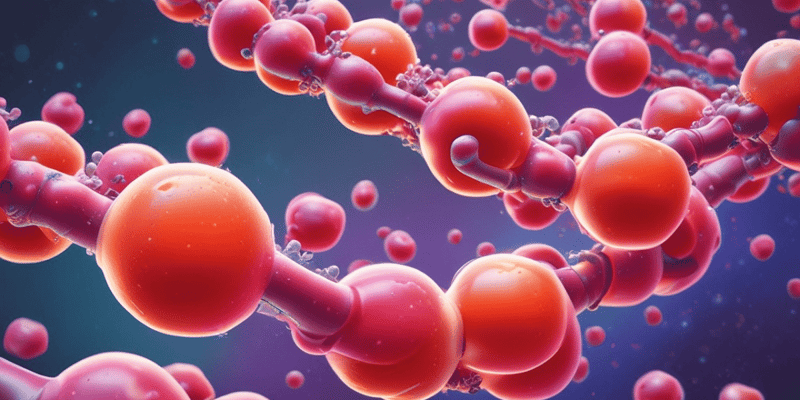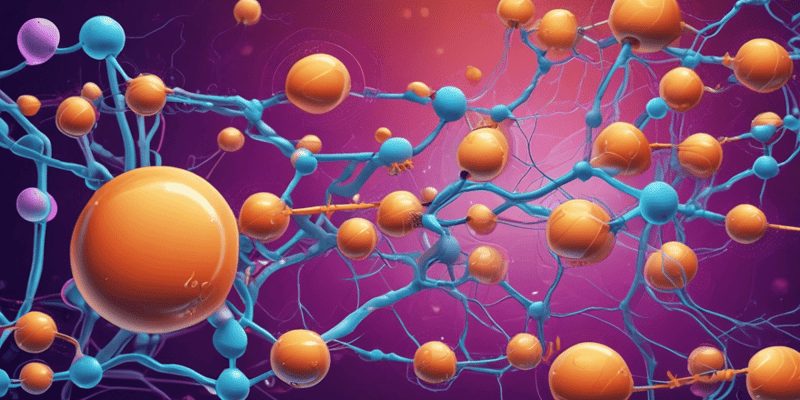45 Questions
Why is flip-flopping or transverse exchange of lipid components in membranes not readily achieved?
Because it requires a lot of energy to move the hydrophilic head to the hydrophobic area
Which lipid component is predominant in the outer layer of the membrane?
Sphingomyelin
What is the function of ATP-dependent flippase?
To move lipids from extracellular to cytoplasmic layers
Why is the asymmetry of lipid composition in membranes important?
Because it affects the function of the membrane
When is the asymmetry of lipid composition in membranes established?
During biosynthesis
What is the function of scramblase?
To facilitate flip-flop movements
Why is the movement of lipids from cytoplasmic to extracellular layers non-specific?
Because it is facilitated by ATP-dependent floppase
What is the purpose of size sealing in lipid transport?
To facilitate the movement of large lipids
Why is flip-flopping a slow process?
Because it requires a lot of energy
What is the net charge if a carboxylic group is attached?
Negative 1
What is the parent compound of sphingolipids?
Either sphingosine or dihydrosphingosine
What is unique about the sphingomyelin in myelin sheaths?
They have longer chains, usually 24 carbons
What is the characteristic of glycosphingolipids?
They contain a sugar
What is the main difference between galactocerebrosides and glucocerebrosides?
One has galactose as sugar and the other has glucose
What is the characteristic of sulfatide?
It is a sulfate group esterified on the C3 of the sugar
What is the net charge if serine is attached?
Negative 1
What is the characteristic of sphingomyelin?
It is a type of phospholipid
What is the characteristic of cerebrosides?
They contain a sugar
What is a characteristic of receptors in cell membranes?
They are specific to their ligands
Where can receptors be found in a cell?
On the outside surface of the cell membrane and the cytoplasmic surface of the membrane
What is the function of ligands in cell signaling?
To initiate a cellular response by binding to receptors
What is the result of the binding of ligand to receptor?
The signaling process is initiated
What happens when the concentration of the free ligand in the aqueous environment increases?
The ligand associates with the receptor
What is the result of upregulation of receptors on the membrane surface?
Greater cell response
What is the result of downregulation of receptors on the membrane surface?
Decreased cell response
What is one of the initial responses to ligand-receptor interaction?
Opening of channels in the membrane
What happens when the ligand dissociates from the receptor?
The signaling process is terminated
What is the binding process that allows phosphorylation of the alpha-subunit of the transporter?
Binding of 3 Na+ ions inside the transporter
In which conformation does the transporter open to the extracellular side?
E2 type
What is the direction of Na+ movement during translocation?
Against its concentration gradient
What occurs during the phosphorylated E2 form?
The transporter binds 2 K+ ions from the outside
In which conformation does the transporter open to the cytoplasm and release K+ ions?
E1 type
What is the direction of K+ movement during translocation?
Up its concentration gradient
When does the hydrolysis of ATP occur?
When Na and K are translocated
What is the result of the E2 type's reduced affinity for Na+?
The release of Na+ into the external environment
What is the characteristic of the E1 type in relation to K+?
It exhibits a low affinity for K+
What is the shape of a saturated fatty acid?
Straight
What happens to the fluidity of a membrane when unsaturated fatty acids with cis double bonds are present?
It increases
What is the charge of the phosphate group in glycerophospholipids at pH 7?
Negative
What is the net charge of a glycerophospholipid with choline or ethanolamine attached?
Zero
What is the characteristic of glycerophospholipids?
Amphipathic
What is the main difference between saturated and unsaturated fatty acids?
Shape
Why do unsaturated fatty acids with trans double bonds not pack as closely as saturated fatty acids?
Due to their kinked shape
What determines the net charge of a glycerophospholipid?
The attached molecule (e.g. choline or ethanolamine)
Why do glycerophospholipids have different fatty acid contents?
Due to differences in membrane function
Make Your Own Quizzes and Flashcards
Convert your notes into interactive study material.
Get started for free



